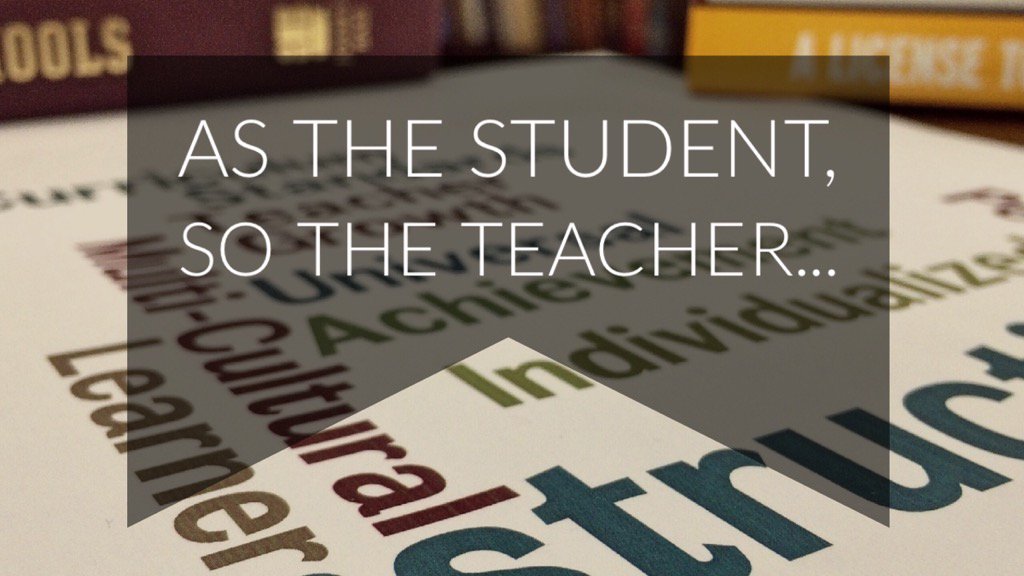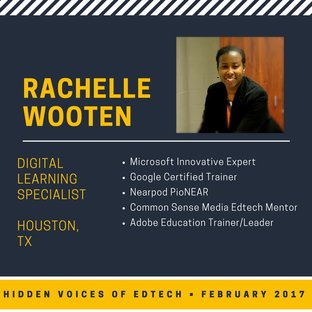It's been very insightful to learn more about the various instructional design theories. Before this class, I saw myself having only a "constructivist" approach to teaching and learning. This was well suited for teaching Professional Communications because so much of the content is about students constructing meaning and applying to their own professional opportunities and personal situations. It wasn't until Kathy posted a question in one of my discussions about connectivism that I even gave it a thought. Then, after Joellen Killon mentioned it in one of our Instructional Coaching sessions recently, I was determined to dig deeper since theory was so closely connected (no pun intended) to my role as a Digital Learning Specialist. Most of the learning in which I participate is through informal, online connections. In fact, in one of the articles I came across, Karen Stephenson says,
“Experience has long been considered the best teacher of knowledge. Since we cannot experience everything, other people’s experiences, and hence other people, become the surrogate for knowledge. ‘I store my knowledge in my friends’ is an axiom for collecting knowledge through collecting people (undated).” (Siemens, 2017 February 5)
I lean on my professional learning network for so much and I contribute just as much! So, after further investigation, I have realized that I have both a constructivist and connectivist style when it comes to learning. I appreciate the way the gentlemen said it in the iNACOL video on online interaction, "Just because it's an online course does not mean that all the learning has to happen online in front of a computer" (iNACOL, 2017). When developing an online course, as a Digital Learning Specialist that supports two secondary campuses, I can make sure that teachers have opportunities to benefit from the flexibility of the online environment while also leveraging the benefit of face-to-face collaboration and activities with other participants. We can do that by inviting teachers to visit other teachers' classrooms and look for specific behaviors and post their findings in a discussion board or take pictures of things and upload them to a media album in Schoology. These are also some of the things I incorporated in the course that I created.
One of the tools that made it easier to create my course was by using the UbD plan. The UbD plan helped me to focus on the enduring understandings and essential questions, the things students would know and be able to do, and which performance tasks would help me assess whether they mastered the objectives. The learning plan helped me to list all the activities from the beginning of the unit to the end and determine where they fit in the (whereto) framework. I also used it to help me determine which activities were best suited for online activities or face-to-face class time. Likewise, the table that Bates mentions in Teaching in the Digital Age (2015) provided another layer of choosing between face-to-face and online content. It actually broke it down by content and skills. The table will be a big help for teachers and (us as curriculum writers) and will serve as a guide in making those decisions.
At first, I wanted to design a professional learning course but then I realized it would be more beneficial to see blended course design from the perspective of a teacher. Taking that view helped me to see what learner supports teachers will need and barriers students may encounter if the course is not well organized and instructions are not clear. One of the other tips I took from the iNACOL video on online interaction was how she includes a zero week in her online course where students can just get to know each other and build a "community" (iNACOL, 2017). As we look to provide more online learning opportunities for students, I think there are two enduring understandings I am taking away from this course: ensuring that we create a safe online community of learners, and that we model the expectations we want to see. Our department is currently engaging in an online book study of "Blended Learning in Action" within Schoology. And one of my guiding principles, when it comes to creating professional learning experiences, is stated so eloquently and succinctly: " as the student so the teacher." It is so important when we create online learning courses that we model for teachers what the learning should look like for their students.
In order to truly differentiate learning, prepare students for 21st century learning, and increase student engagement we must consider the possibilities of online learning.
“Experience has long been considered the best teacher of knowledge. Since we cannot experience everything, other people’s experiences, and hence other people, become the surrogate for knowledge. ‘I store my knowledge in my friends’ is an axiom for collecting knowledge through collecting people (undated).” (Siemens, 2017 February 5)
I lean on my professional learning network for so much and I contribute just as much! So, after further investigation, I have realized that I have both a constructivist and connectivist style when it comes to learning. I appreciate the way the gentlemen said it in the iNACOL video on online interaction, "Just because it's an online course does not mean that all the learning has to happen online in front of a computer" (iNACOL, 2017). When developing an online course, as a Digital Learning Specialist that supports two secondary campuses, I can make sure that teachers have opportunities to benefit from the flexibility of the online environment while also leveraging the benefit of face-to-face collaboration and activities with other participants. We can do that by inviting teachers to visit other teachers' classrooms and look for specific behaviors and post their findings in a discussion board or take pictures of things and upload them to a media album in Schoology. These are also some of the things I incorporated in the course that I created.
One of the tools that made it easier to create my course was by using the UbD plan. The UbD plan helped me to focus on the enduring understandings and essential questions, the things students would know and be able to do, and which performance tasks would help me assess whether they mastered the objectives. The learning plan helped me to list all the activities from the beginning of the unit to the end and determine where they fit in the (whereto) framework. I also used it to help me determine which activities were best suited for online activities or face-to-face class time. Likewise, the table that Bates mentions in Teaching in the Digital Age (2015) provided another layer of choosing between face-to-face and online content. It actually broke it down by content and skills. The table will be a big help for teachers and (us as curriculum writers) and will serve as a guide in making those decisions.
At first, I wanted to design a professional learning course but then I realized it would be more beneficial to see blended course design from the perspective of a teacher. Taking that view helped me to see what learner supports teachers will need and barriers students may encounter if the course is not well organized and instructions are not clear. One of the other tips I took from the iNACOL video on online interaction was how she includes a zero week in her online course where students can just get to know each other and build a "community" (iNACOL, 2017). As we look to provide more online learning opportunities for students, I think there are two enduring understandings I am taking away from this course: ensuring that we create a safe online community of learners, and that we model the expectations we want to see. Our department is currently engaging in an online book study of "Blended Learning in Action" within Schoology. And one of my guiding principles, when it comes to creating professional learning experiences, is stated so eloquently and succinctly: " as the student so the teacher." It is so important when we create online learning courses that we model for teachers what the learning should look like for their students.
In order to truly differentiate learning, prepare students for 21st century learning, and increase student engagement we must consider the possibilities of online learning.
References:
Bates, A.W. (2015) Teaching in the Digital Age.
iNACOL. (2017, February 18). iNACOL Quality Standards Video #1: Online Interaction. Retrieved from Vimeo: https://vimeo.com/51871311
Siemens, G. (2017, February 5). Connectivism: A learning theory for the digital age.Retrieved from http://202.116.45.236/mediawiki/resources/2/2005_siemens_Connectivism_A_LearningTheoryForTheDigitalAge.pdf.
Bates, A.W. (2015) Teaching in the Digital Age.
iNACOL. (2017, February 18). iNACOL Quality Standards Video #1: Online Interaction. Retrieved from Vimeo: https://vimeo.com/51871311
Siemens, G. (2017, February 5). Connectivism: A learning theory for the digital age.Retrieved from http://202.116.45.236/mediawiki/resources/2/2005_siemens_Connectivism_A_LearningTheoryForTheDigitalAge.pdf.


 RSS Feed
RSS Feed
